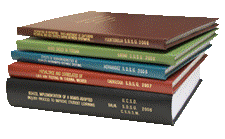Libraries, University of Nebraska-Lincoln

Archival Master’s Theses from the University of Nebraska-Lincoln
Date of this Version
7-1963
Document Type
Thesis
Citation
Thesis (M.S.)—University of Nebraska—Lincoln, 1963. Department of Agricultural Economics.
Abstract
Dairy cattle feeding guides are available in various forms.The feeding recommendations vary considerably among them, depending on the source of data, methods of analysis of data, methods of presentation and purpose of the feeding guide. The majority of the guides are difficult to adapt to the various dairy farm conditions.
This study was an attempt to prepare a feeding guide which would include some of the factors whose effect on milk production can be measured.Secondary sources of data were used as it was impossible to conduct a controlled experiment.
The feeding guide was made into two parts.The first part consisted on the basic data which gave estimates of milk production from cows of 26 different productive capacities, fed medium quality roughage freely and grain rations ranging from no grain to levels where the last pound of grain resulted in the production of 0.3 pound of milk.The marginal physical product ranging from 1.00 to 0.30 at different levels of grain feeding was calculated for each of the 26 cows at different productive capacities to allow dairymen to estimate the point where marginal cost is equal to marginal revenue.
The second part of the feeding guide, made to fit over the first part, would allow estimates of milk production and the economic optimum level of feeding for factors that deviate from the basic part of the feeding guide.The features that can be considered in using the feeding guide are:
-
Changes in the prices of hay, grain, and milk.
-
Variations in the quality of roughage.
-
Restricting the quantity of roughage feeding.
-
Age of cow.
-
Stage of lactation.
-
Productive capacities of cows.
Advisor: Robert M. Finley


Comments
Copyright 1963, the author. Used by permission.